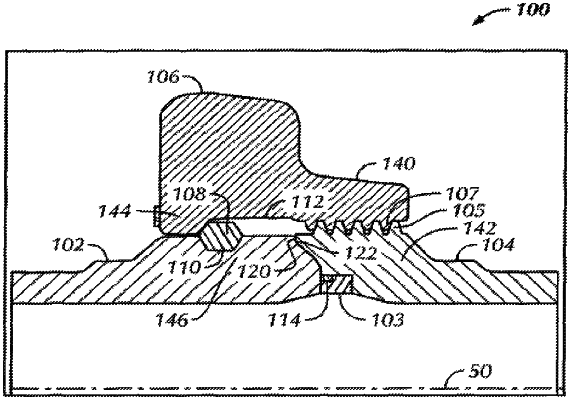| CPC F16L 19/0218 (2013.01) [F16L 19/0231 (2013.01); Y10T 29/49826 (2015.01)] | 13 Claims |

|
1. A hammer union having a threaded female sub, the threaded female sub comprising:
a conduit having a first end and a female end,
wherein the female end of the threaded female sub comprises:
an outer contact surface substantially perpendicular to a longitudinal axis of the threaded female sub, an outermost diameter of the outer contact surface being equidistant as a minor thread diameter of the threaded female sub from the longitudinal axis of the threaded female sub;
an inner contact surface substantially perpendicular to the longitudinal axis of the threaded female sub and having a different axial location along the longitudinal axis of the threaded female sub than the outer contact surface; and
an intermediate contact surface between the outer contact surface and the inner contact surface, the intermediate contact surface having at least a portion that is both non-parallel and non-perpendicular to the longitudinal axis of the threaded female sub, wherein the portion that is both non-parallel and non-perpendicular to the longitudinal axis of the threaded female sub extends from the inner contact surface to the outer contact surface; and
a seal pocket formed on an inner surface of the threaded female sub, wherein the seal pocket is radially inwardly adjacent the inner contact surface.
|